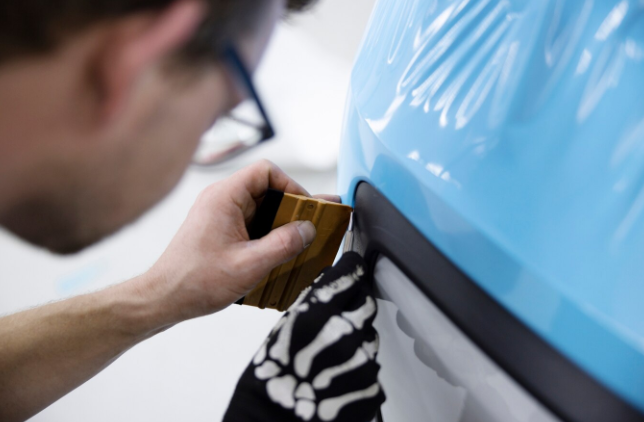When it comes to vehicle maintenance, most drivers think about oil changes, tire rotations, and brake checks. But there’s another important component that often gets overlooked—automotive weather stripping. Though it might seem minor, this humble sealing material plays a critical role in keeping your ride comfortable, quiet, and protected from the elements. In this guide, we’ll break down what automotive weather stripping is, why it matters, how to spot when it needs replacing, and what your options are for repair or replacement.
What Is Weather Stripping?
Automotive weather stripping is the rubber or foam material that lines the edges of car doors, windows, trunks, and even sunroofs. Its main function is to create a tight seal that prevents water, dust, and air from entering the vehicle. It also helps reduce noise from outside traffic and wind, contributing to a smoother, quieter ride. Weather stripping is made from durable, flexible materials designed to withstand temperature changes and repeated opening and closing. Over time, however, it can wear out, crack, or detach—especially in areas with extreme heat, cold, or humidity.
Why It Matters
While it’s easy to ignore until there’s a problem, properly functioning weather stripping provides several key benefits:
- Waterproofing: It prevents rain, snow, and car washes from leaking into your vehicle’s interior, which helps avoid rust, mildew, and electrical damage.
- Sound Insulation: A good seal keeps your cabin quieter by blocking out wind and road noise.
- Climate Control Efficiency: With intact weather stripping, your car’s heating and cooling systems work more effectively, as less air escapes.
- Enhanced Comfort: It helps eliminate cold drafts in winter and keeps your A/C air inside during summer.
- Protection Against Dust and Pests: Keeps unwanted particles and even insects out of your vehicle.
Signs Your Weather Stripping Needs Attention
Like any part of your car, weather stripping doesn’t last forever. Here are a few telltale signs that it may need replacing:
- Visible Cracks or Tears: Over time, rubber and foam can dry out, split, or disintegrate.
- Leaks After Rain or Car Wash: Water on the seats or floor is a clear warning sign.
- Increased Road or Wind Noise: A whistling sound while driving may indicate an air gap.
- Difficult Door or Window Closures: If you’re slamming doors or struggling with windows, worn seals might be to blame.
- Moldy or Musty Smell: Moisture entering the cabin can lead to mold growth in carpets or upholstery.
DIY Inspection Tips
Checking your weather stripping is a simple process. Start by visually inspecting the seals around all doors, windows, and the trunk. Look for brittleness, gaps, or signs of detachment. Then, run your hand along the surface to feel for unevenness. You can also conduct a water test—lightly spray water around the seals and check for leaks inside the vehicle.
Repair or Replace?
Whether you can repair or need to replace your weather stripping depends on the damage. Minor issues—like loose or slightly detached seals—can often be fixed using weather stripping adhesive or rubber conditioner. These products help restore flexibility and reseal minor gaps. For more extensive damage, full replacement is the best option. Fortunately, it’s not overly complicated and can often be a DIY job with the right tools and replacement strips. Make sure you:
- Buy the Right Material: Match the type (door, trunk, window) and shape of the weather strip to your car’s make and model.
- Clean the Surface: Remove the old adhesive and dirt before installing the new strip.
- Use Proper Adhesive: For a secure and durable bond, use automotive-grade weather stripping glue or high-quality pressure-sensitive adhesives specifically designed for vehicle use. These options ensure the seal stays firmly in place through temperature changes and repeated use.
- Apply Evenly: Press the new strip firmly into place, following the contours of the door or trunk.
If you’re not comfortable with DIY repairs, a mechanic or auto body shop can handle it quickly and affordably. If you ever need to move your vehicle due to severe door seal damage or after a major weather stripping overhaul, obtaining reliable Car Shipping Lancashire ensures your car is transported safely and securely without compromising any seals.
Preventive Maintenance
You can extend the life of your weather stripping with a few simple habits:
- Regular Cleaning: Wipe down the seals with a damp cloth to remove dirt and debris.
- Lubricate Periodically: Use a silicone-based lubricant to keep the rubber flexible and prevent cracking.
- Protect Against UV: Park in shaded areas or use sunshades to reduce heat exposure, which can dry out the rubber over time.
Final Thoughts
Weather stripping might not be the flashiest part of your vehicle, but it’s essential for keeping your ride quiet, comfortable, and leak-free. A little maintenance and timely replacement can save you from costly water damage and annoying cabin noise down the road. So, seal the deal—check your weather stripping today and ensure your car stays protected from whatever the road (or weather) throws your way.

